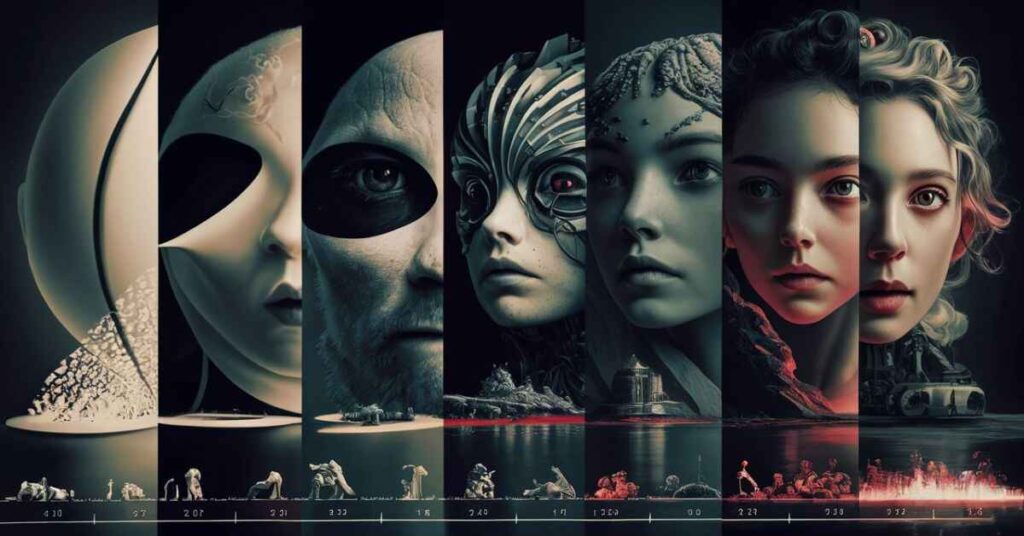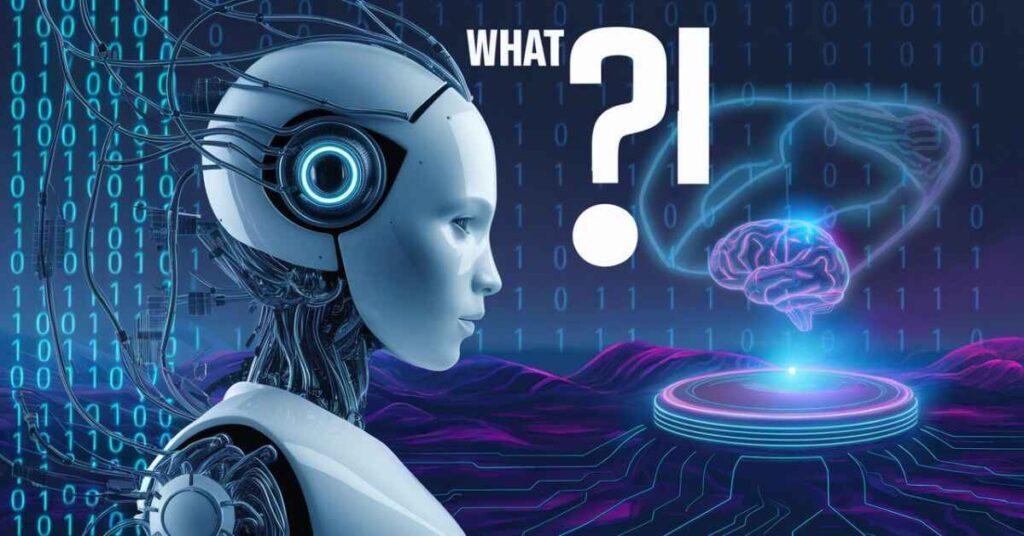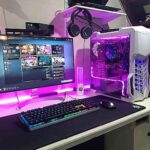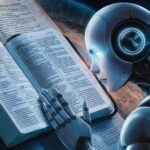
When Did AI Art Start? How AI Art Generators Work (2024)
In recent years, the artwork sector has noticed a superb and demanding force – the upward push of synthetic intelligence (AI) in growing visible paintings. AI-generated art, often known as “AI art,” has captivated artists, generation enthusiasts, and the overall public alike with its ability to supply impressively innovative and unique portions. But when did this attractive connection of art and technology truly begin? In this complete article, we’ll explore the origins and evolution of AI-generated artwork, tracing its journey from early experiments to today’s cutting-edge AI art generators. When Did AI Art Start? How AI Art Generators Work (2024).
Understanding AI
Before delving into the facts of AI paintings, it’s very critical to recognize what synthetic intelligence is and its importance to the inventive realm. AI refers back to the capability of machines or laptop systems to imitate human intelligence via gaining knowledge of, reasoning, and making decisions based on data and algorithms. In the context of art, AI algorithms may be skilled in big datasets of pictures, patterns, and strategies to generate novel visual outputs, frequently blending unique elements in unexpected and innovative ways. When Did AI Art Start? How AI Art Generators Work (2024).
History of AI Art
While the idea of AI-generated art may also seem like a recent surprise. Its roots may be traced returned numerous decades. In the 1960s and Nineteen Seventies, authentic artists and researchers began testing with computer systems and algorithms to create visible artwork. One of the first examples is the work of Michael Noll, a researcher at Bell Labs, who used a computer to generate digital patterns and abstract images.
Another first-rate discernment in the early records of AI artwork is Harold Cohen, a British artist who advanced AARON, a laptop software that might autonomously create original artwork. AARON’s outputs, which protected elaborate line drawings and structures, were exhibited in galleries and galleries, difficult the conventional notions of artwork and writing difficult. When Did AI Art Start? How AI Art Generators Work (2024).
Introduction to GANs

A main breakthrough in the AI artwork era got here with the development of Generative Combative Networks (GANs) in 2014. GANs are a kind of machine gaining knowledge of framework that pits neural networks in opposition to each other – a generator network that creates synthetic statistics and a discriminator network that attempts to separate the generated information from actual data.
This adversarial training process allows GANs to generate highly realistic and diverse outputs, making them particularly well-suited for AI art generation. Many of the modern-day state-of-the-art AI artwork mills, together with DALL-E. And Midjourney, are built upon the standards of GANs. When Did AI Art Start? How AI Art Generators Work (2024).
How AI Art Generator Work
At the heart of AI art generators lies a complex process of machine learning and neural networks. These algorithms are trained on vast datasets of images, ranging from photographs to artworks across various styles and mediums. Through this training process, the AI model learns to recognize patterns, shapes, colors, and other visual elements that make up these images.
When prompted with a textual content description or a current photo, the AI art generator makes use of its learned information to generate a new visible output that fits the given input. This technique entails numerous steps, such as:
- Encoding: The input (text or image) is converted into a numerical picture that the AI model can understand.
- Processing: The encoded input is handle through multiple layers of the neural network, where various additions and changes take place.
- Decoding: The processed information is then decoded into a visual output, such as an image or a series of images.
Output Generation
One of the key elements of AI art generation is the ability to supply novel and particular outputs. This is achieve through a process call sampling. Where the AI model generates a distribution of possible outputs based on the input and its training data. From this distribution, a specific output is select, often randomly or based on certain criteria, such as unity or aesthetics. When Did AI Art Start? How AI Art Generators Work (2024).
Types of AI Art Programs
The world of AI art is vast and diverse, with various programs and tools catering to different artistic mediums and styles. Here are some of the most popular types of AI art generators:
- Text-to-Image Generators: These applications, including DALL-E, Midjourney, and Stable Flow, allow users to generate photographs primarily based on written descriptions or prompts.
- Image-to-Image Generators: Tools like Leonardo AI and Photosonic permit users to generate new pics by presenting an existing image as enter, taking into consideration creative changes and blending of styles.
- AI Art Avatars: Services like Lensa AI offer the ability to create personalized AI-generated avatars or digital portraits based on uploaded photos.
- AI Video Generators: Some AI gear, like Runway ML’s Gen-1, can generate quick videos or animations primarily based on textual prompts or current images.
- AI Music Generators: While much less unusual, AI algorithms also can be traine to generate authentic tune preparations, melodies, and soundscapes.
Using AI Art Ethically
As AI artwork maintains an advantage of ordinary reputation, it is crucial to address the moral thoughts surrounding its use and creation. One of the primary worries revolves around copyright and possession of AI-generated artwork. Since AI fashions are educating on existing datasets, there are questions about capability copyright infringement and the rights of the unique artists whose works have been used for schooling.
Additionally, there are concerns about biases and risks inherent in the schooling data used by AI fashions. If the training statistics are skew or lack variety, the generate outputs can also maintain dangerous stereotypes or biases, probably reinforcing societal prejudices.
To cope with those troubles, agencies just like the AI Ethics Board have proposed hints and excellent practices for the accountable use of AI in art and other creative domains. These pointers emphasize the importance of transparency, responsibility, and ethical information practices, aiming to foster a responsible and equitable environment for AI-pushed creativity. When Did AI Art Start? How AI Art Generators Work (2024).
The Impact of Deep Learning on AI Art
The rapid improvements in AI artwork technology may be largely attribute to the breakthroughs in deep gaining knowledge of, a subfield of device gaining knowledge that entails schooling artificial neural networks on huge datasets. Deep getting-to-know algorithms have proven to be remarkably powerful in knowledge and representing complex patterns in facts, making them properly proper for duties like picture popularity, generation, and manipulation.
One of the key traits that propelled the AI artwork era was the creation of Generative Adversarial Networks (GANs), as stated in advance. GANs allowed for the generation of pretty practical and various pics, overcoming some of the limitations of advanced techniques.
Building upon the achievement of GANs, researchers and builders have persevered to push the limits of the AI artwork era, leading to the appearance of diffusion models. These models have been verified to be fairly adept at shooting worried info and nuances, resulting in AI-generated artwork that competitors and occasionally even exceeds the high-quality of human-created pieces. When Did AI Art Start? How AI Art Generators Work (2024).
FAQs
Ans: The future of AI art is likely to involve further advancements in technology, collaborations between AI systems and human artists, and continued exploration of the creative possibilities offered by AI algorithms.
Ans: The concept of AI art can be trace back to the early 1960s when computer programmers and artists began experimenting with computer-generated imagery and algorithms to create artistic works.
Ans: AI art gained broader recognition and attention in the early 21st century with the development of Generative Adversarial Networks (GANs) by Ian Goodfellow in 2014. This technology revolutionized the field of AI art by enabling the generation of highly realistic and sophisticated images.
Ans: AI art has experienced a significant increase in popularity and visibility in recent years, driven by advancements in technology, increased accessibility of AI tools, and growing interest from artists, collectors, and the general public.
Ans: You can explore books, articles, documentaries, and online resources dedicated to AI art, as well as attend exhibitions, conferences, and workshops on the subject.






